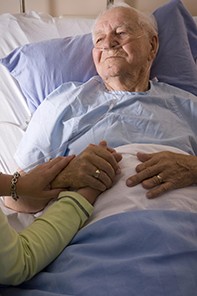Peer Reviewed
Feature Article Pain medicine
Achieving pain control at the end of life
Abstract
Pain management at the end of life calls for the knowledge, skills and compassionate attitude of clinicians working within an interdisciplinary team created around the person who is dying. Many people express a preference to die at home, and in the vast majority of cases pain can be managed safely and effectively to facilitate this.
Key Points
- Good pain management at the end of life is based on comprehensive assessment (including psychosocial assessment) and diagnosis, careful titration of analgesics, attention to detail and frequent clinical review by the medical and nursing team.
- Opioids are the cornerstone of pain management at the end of life and, if used proportionate to pain, do not hasten dying. They are used in combination with other analgesics and titrated to efficacy and minimisation of adverse effects.
- With careful advanced planning, patients may die well at their home or residential aged care facility. This planning should involve GPs, community palliative care teams and the family, and be supported by hospital specialists as needed.
Purchase the PDF version of this article
Already a subscriber? Login here.

